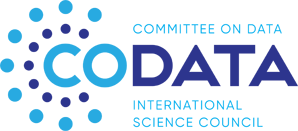Please see the announcement below, from the International Science Council, UNDRR and PHE of an event to launch a new report on hazards definition for the Sendai Framework.
Virginia Murray (Public Health England and CODATA Executive Committee) led the development of the revised hazards list and the report. Simon Cox (CODATA Executive Committee) was a contributor to the process.
This is a major advance in the definition of hazards and, as such, has considerable bearing on the ISC CODATA Decadal Programme on Making data work for cross-domain grand challenges and the initial working group on policy monitoring indicators.
See also Simon Cox’s short interview on the ISC twitter feed: https://twitter.com/ISC/status/1285877777527439360

Unpacking hazards: launch of a new scientific report on hazards definition for the Sendai Framework
Dear Advisory Group Members,
After a few months of silence, we are pleased to announce that the Sendai Hazard Definition and Classification Review project is now complete with a technical report to be launched on 29 July 2020 at 14.00 CET at a high-level event with SRSG Mami Mizutori (UNDRR), Dr Heide Hackmann (ISC), Prof. Virginia Murray (Public Health England and Chair of the working group), and members of the Technical Working Group. The event will present the report findings and discuss next steps. Register to participate in the event. Register now
The COVID-19 pandemic has reinforced the need to look at the wider scope of hazards, and to standardize hazards definition to support coherent data collection, data sharing, and risk assessment.
Following the survey last year to which many of you participated, the working group developed a set of criteria to focus the identification of relevant hazards given the expanded scope of hazards of the Sendai Framework and the UN General Assembly definition that defines hazard as a process, phenomenon or human activity that may cause harm or damage. This resulted in a list of over 300 hydrometeorological, extraterrestrial, geological, environmental, biological, chemical, technological and societal hazards. A hazard information profile was then developed for many of these hazards providing an internationally agreed and scientifically robust definition, and a description of these hazards.
In addition, the report of the TWG identifies a set of six key recommendations to take this initial work forward and strengthen our capacity to understand and reduce risk. The process has enabled a wide conversation between disciplines and across many organizations and provides an initial input into a longer-term process of standardizing hazard information, and engaging with a wide range of users within and beyond the traditional field of disaster risk. Register now

